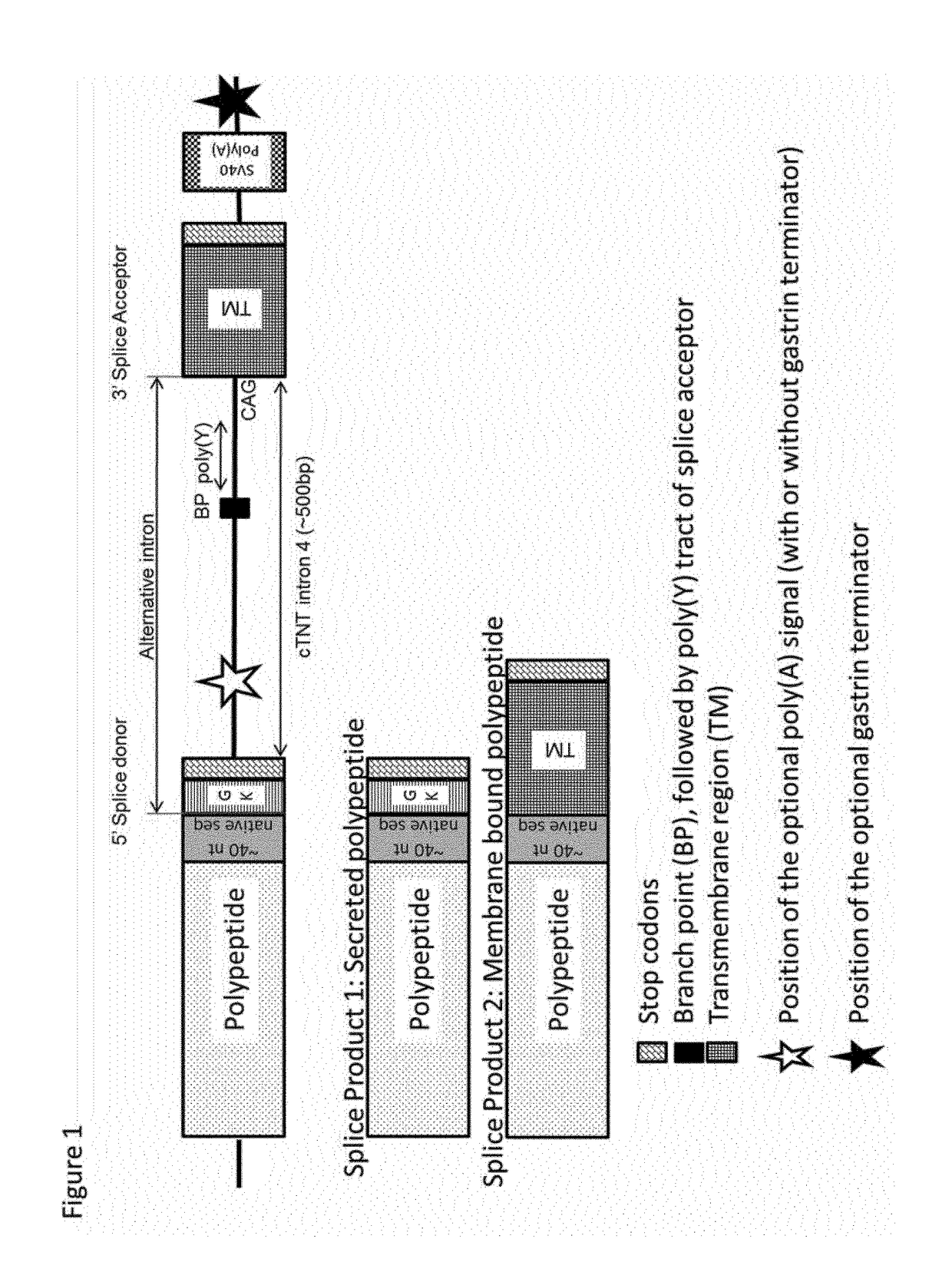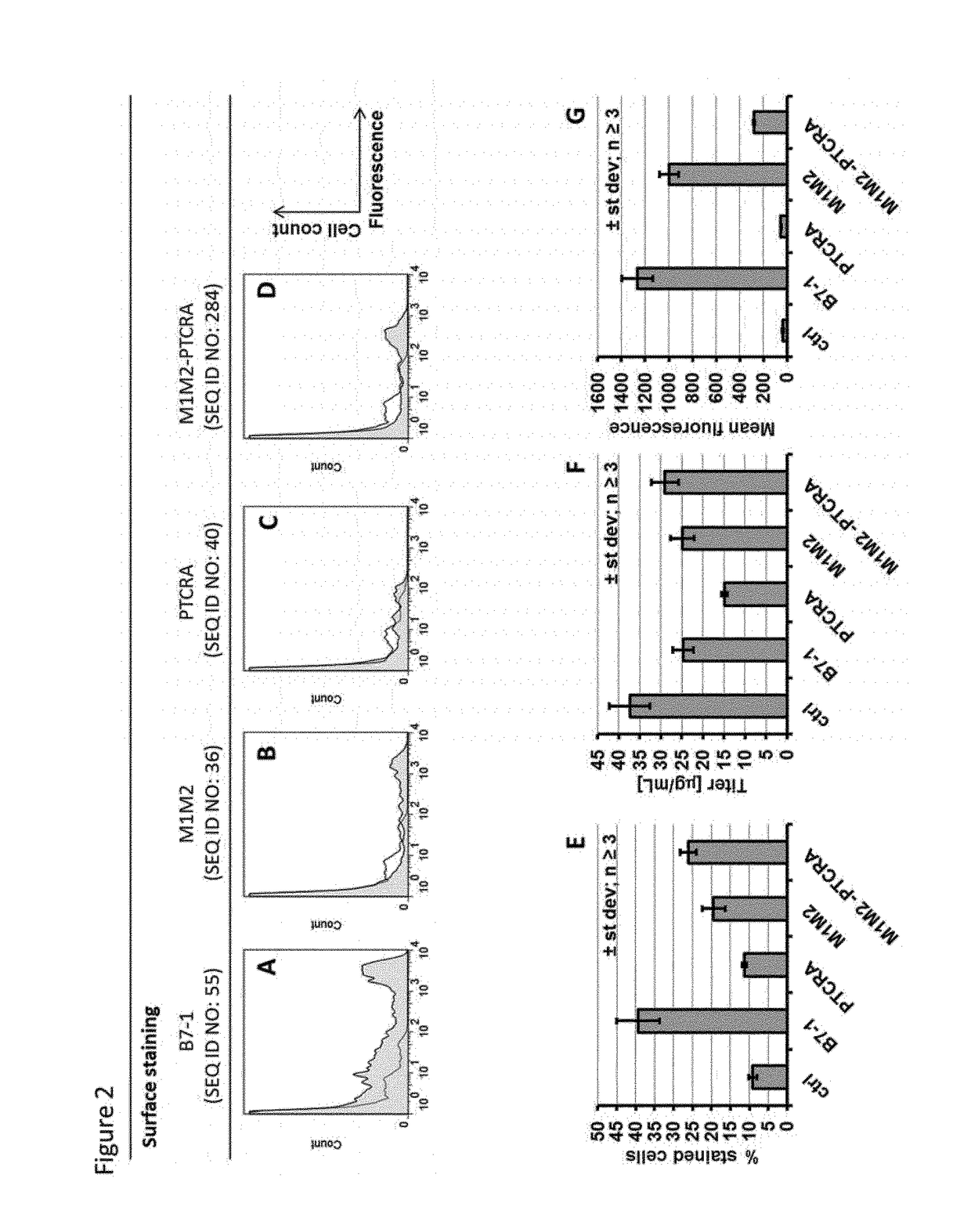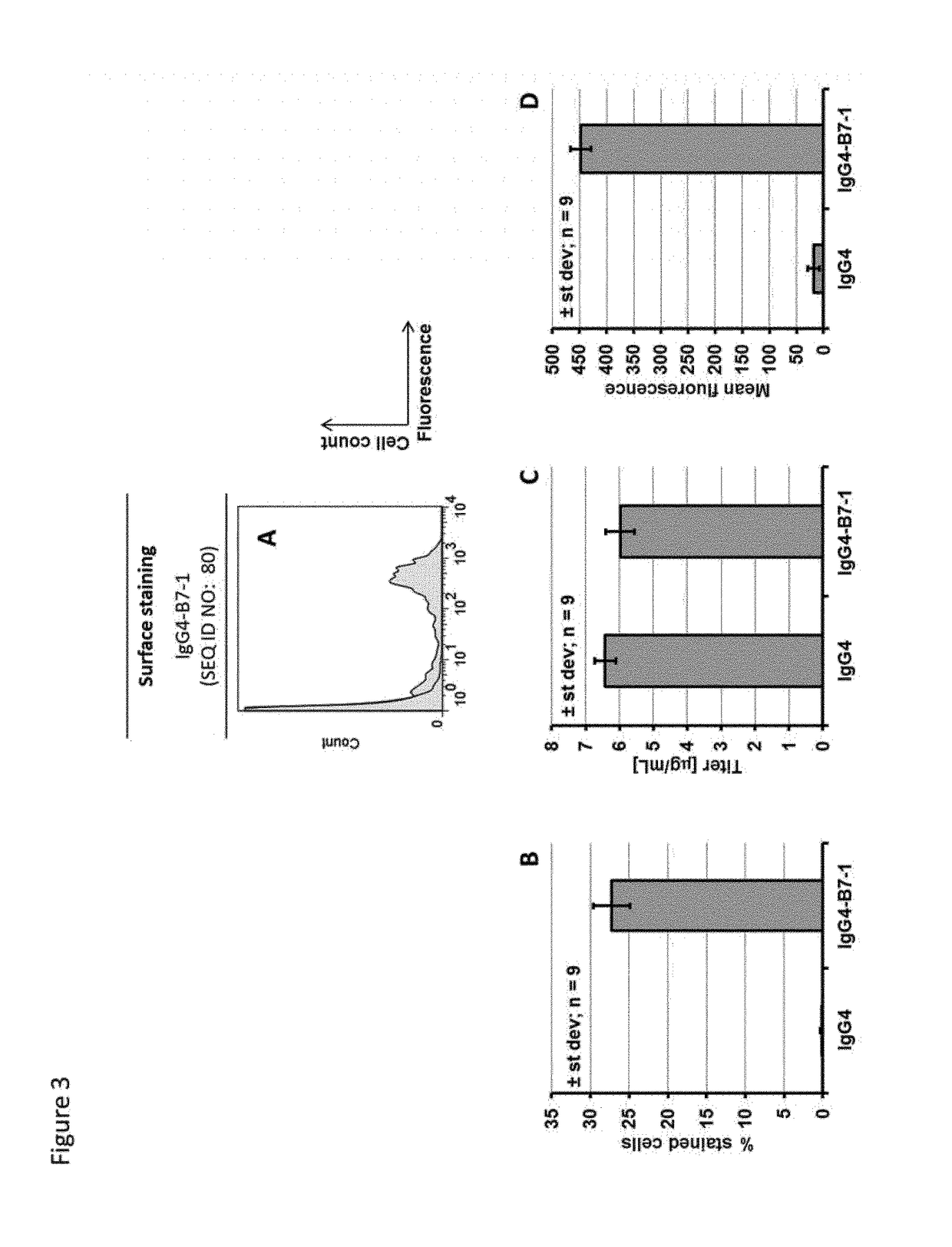Expression constructs and methods for selecting host cells expressing polypeptides
a technology of host cells and constructs, applied in the field of expression constructs and methods for selecting host cells expressing polypeptides, can solve the problems of affecting the production yield of bispecific antibodies, time-consuming, and therefore non-routine process, and achieve the effect of increasing the membrane display of proteins and increasing er exportation
- Summary
- Abstract
- Description
- Claims
- Application Information
AI Technical Summary
Benefits of technology
Problems solved by technology
Method used
Image
Examples
example 1
f the Vectors
Introduction
[0150]The alternate splicing constructs that were prepared comprised the splice donor sequence of the human ighg1 gene. The introns (including the splice acceptor site) were derived from the chicken cTNT intron 4, whereas the exon was derived from the transmembrane region of the ighg1 gene (in the following referred to as M1M2), the transmembrane region of the T-cell receptor alpha (PTCRA), or the murine B7-1 gene. In several constructs, the murine B7-1 transmembrane domain was replaced by other transmembrane domains, including naturally occurring transmembrane domains and modifications of these. Furthermore, the B7-1 cytosolic tail in the B7-1 transmembrane region was replaced by several other cytosolic tails with or without an ER exportation signal.
[0151]For the expression of a full length antibody of IgG1 or IgG4 format, the simultaneous expression of heavy and light chain was necessary. All subunits were expressed using separate plasmids using a co-trans...
example 2
isplay and Specific Detection of Translated Product
Introduction
[0238]Example 1 described the cloning of alternate splicing constructs leading to expression of two different mRNAs from the same DNA template, coding either for a secreted protein or the same protein with a C-terminal transmembrane region (TM). As detailed in the definition section, a transmembrane region comprises an optional linker, a transmembrane domain and an optional cytoplasmic tail. These constructs were transfected in CHO-S cells in order to determine whether this technology could be used for displaying a fraction of the protein on the cell membrane, while maintaining an efficient secretion of the target protein. Three different proteins were used in this experiment: An antibody of the IgG1 subclass, an antibody of the IgG4 subclass and a bispecific antibody of the BEAT® format.
Material and Methods
Transfections
[0239]Suspension CHO-S cells were transfected with the expression vectors using polyethyleneimine (Jet...
example 3
n of Cell Surface Display and Expression Titer by Modification of Intron Sequence
Introduction
[0258]As demonstrated in Example 2, alternate splicing of a transmembrane region allows redirecting a portion of an otherwise normally secreted antibody to the cell surface. Nevertheless, this modification of the secretion process might have a negative impact on the secretion level of antibody. Fine-tuning the splicing ratio between secreted and membrane displayed antibody might help recovering the expression level observed with the non-spliced antibody constructs (without an alternate splicing transmembrane region). This will be demonstrated in the following example.
Material and Methods
Transfections
[0259]Suspension CHO-S cells were transfected with expression vectors using polyethyleneimine (JetPEI®, Polyplus-transfection, Illkirch, France) in 50 ml bioreactor tube (Tubespins, TPP) format. For this purpose, exponential growing cells were seeded at a density of 2 E6 cells / mL in 5 mL of OptiM...
PUM
| Property | Measurement | Unit |
|---|---|---|
| Content | aaaaa | aaaaa |
Abstract
Description
Claims
Application Information
 Login to View More
Login to View More - R&D
- Intellectual Property
- Life Sciences
- Materials
- Tech Scout
- Unparalleled Data Quality
- Higher Quality Content
- 60% Fewer Hallucinations
Browse by: Latest US Patents, China's latest patents, Technical Efficacy Thesaurus, Application Domain, Technology Topic, Popular Technical Reports.
© 2025 PatSnap. All rights reserved.Legal|Privacy policy|Modern Slavery Act Transparency Statement|Sitemap|About US| Contact US: help@patsnap.com



